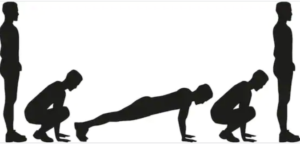If you suffer from anxiety, you may already know that exercise will help.
But a certain kind of exercise can work wonders.
Any kind of exercise will help take the edge off of chronic anxiety.
But high intensity exercise may be your best bet.
A trained body is not required, because even a low level of exercise can feel intense to a sedentary beginner. It’s relative.
A University of Missouri-Columbia study recommends rigorous physical activity.
If you’ve never exercised before, you can still exercise in a very challenging way. Remember, what’s rigorous to one person may be another person’s warmup.
So don’t pass up this opportunity to treat your anxiety just because you’ve been “lazy” or feel out of shape.
Walking up a hill, for instance, is something that the inexperienced exerciser can do. It does not require any particular form or coordination.
Or, they can repeatedly step up and down the bottom stair of a staircase.
For a more experienced person, an example of intense activity for only 30 to 60 seconds would be burpees — as depicted below.

Burpees. Shutterstock/Miceking
The study, however, focused on sustained activity.
Female participants with chronic anxiety were divided into three groups:
1) No activity, 2) Moderate activity, and 3) High intensity exercise.
The women were ages 18-20 and 35-45, and exercise sessions lasted 33 minutes.
The sharpest decline in anxiety was measured in the high intensity exercise group.
This sharpest decline was notable at the 30, 60 and 90 minute post-workout measurements, rather than immediately after.
Though one study is not a be-all end-all for drawing a conclusion, these study results are something to take a good hard look at.
If you’ve been leading a sedentary life, and the idea of intense exercise is unwelcome, at least start ANY exercise to combat your ongoing anxiety.
- Jogging
- Brisk walking
- Yoga
- Strength training
- Medicine ball exercises
- Box step-ups
HOW does exercise treat chronic anxiety?
“Cortisol is not our friend in most instances,” says Rupali Chadha, MD, former chief of medical staff at Metropolitan State Hospital in Norwalk, CA, and board certified general and forensic psychiatric physician.
“With an incoming bear or true ‘fight or flight’ instance as our biologic ancestors faced, it was very handy,” continues Dr. Chadha.
“Now, most of us live in chronic stress situations, some in chronic anxiety.
“Exercise is great for releasing the downstream products of cortisol, to lessen its effects.
“Over time, we produce less cortisol and more of the ‘feel good’ hormones.
“Cortisol actually damages our organs, so anything to bring it down is overall healing.”
What exactly is “high intensity” exercise?
Some fitness experts might say it’s whatever you can do for only several minutes before having to stop.
But for purposes of this article, it gets your heart rate going and you definitely feel out of your comfort zone.
An example might be a step aerobics class in which you can keep up, BUT cannot carry on a conversation.
Another example might be a hard steady hike up a mountain trail.

Sam Mgrdichian/Unsplash
You’re able to sustain this, but would find it uncomfortable to chat with your hiking partner.
A form of highly intense exercise, known as high intensity interval training, consists of work intervals that can be maintained for only half a minute or so before rest is required (e.g., walking, marching in place).


 In addition to general psychiatry,
In addition to general psychiatry, 







































